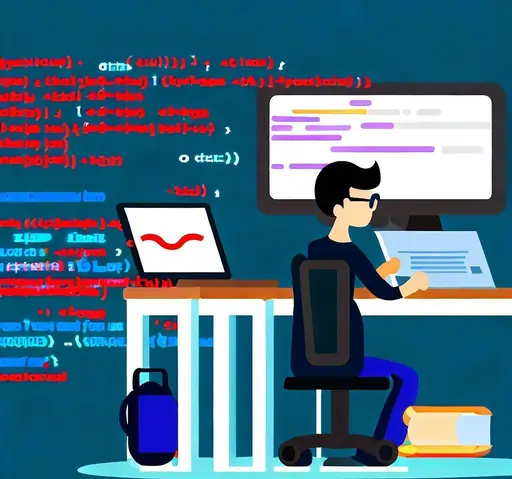Programming Unintentional Plagiarism: An Overview
Programming students who unintentionally present another's work as their own do so either out of a lack of understanding of plagiarism or because they are unaware of the proper citation and use practices. In other instances, it might be brought on by false presumptions about what constitutes standard coding knowledge.

The use of uncredited code snippets from online sources is one of the most popular types of unintentional plagiarism. This method is occasionally referred to as "copy-paste coding." Students and aspiring programmers frequently turn to the internet for help with their coding issues. There are countless pre-written code snippets available on websites like Stack Overflow, GitHub, and other code repositories that can be used to quickly finish related programming tasks. But there is a problem when these excerpts are used without proper credit, which results in unintentional plagiarism.
The fundamental tenets of academic integrity and intellectual property rights are undermined by this practice, even though it may appear harmless to the untrained eye, especially if it only involves a few lines of code. Additionally, it's a lost chance for students to learn and comprehend the logic and reasoning behind the code, which is an important component of programming education. If the copied code is a component of a proprietary software or library, copy-paste coding also has the potential to cause ethical and legal issues.
Code Refactoring and Inadequate Paraphrasing
Programmers frequently commit unintentional plagiarism by not paraphrasing or refactoring borrowed code sufficiently. Programmers often use the term "paraphrasing" to describe how they change the original code while keeping the same functionality. This entails changing control flows, renaming variables and functions, rearranging operations, and changing data structures. However, paraphrasing must involve more than just cosmetic changes; it must involve a significant reorganization of the code, demonstrating a clear comprehension of the underlying logic and method of problem-solving.
The issue arises when students inadequately paraphrase the borrowed code, which results in unintentional plagiarism. This frequently happens when students comprehend the necessity of changing the borrowed code but lack the abilities or knowledge to do so successfully. In these situations, students unintentionally engage in plagiarism by writing code that is strikingly similar to the original source, despite their best efforts. Even though this type of plagiarism is less obvious than straight copying and pasting, it is still problematic because it obscures the student's coding skills and understanding of the issue at hand.
Collaboration Errors and Too Much Pair Programming
Professional programming is a highly collaborative activity, and programming instruction frequently promotes teamwork to mimic real-world programming scenarios. The use of pair programming, a method in which two programmers collaborate on the same issue, is common in both academic and professional contexts. However, in some circumstances, these actions could unintentionally result in plagiarism.
The distinction between group work and individual contribution can often become hazy in pair programming or collaborative coding, especially when it comes time for individual assessment or homework. One student might submit a solution that is not entirely their own if they, for example, rely too heavily on their partner's work. This is not meant to imply that pair programming or collaboration have inherent flaws. Instead, it emphasizes how crucial it is to establish clear expectations and a consensus on what constitutes plagiarism in such collaborative settings.
Insufficient Knowledge of Open Source Licenses
Open-source programs and libraries are now an essential component of the programming environment. These materials, which are open to modification and distribution, frequently include specific licenses that specify how the code may be used, altered, and distributed. The MIT License, the GNU General Public License (GPL), and the Apache License are a few examples of these licenses.
Programmers, particularly students, who use open-source code without understanding the terms of these licenses risk unintentional plagiarism. For instance, a lot of open-source licenses demand that any copies or significant portions of the software bear the original copyright notice and disclaimers. Even if unintentional, failure to abide by these conditions amounts to plagiarism and may have legal repercussions.
Education's Function in Combating Unintentional Plagiarism
Educational institutions are essential in the fight against unintentional plagiarism in programming. Students can build a solid foundation in academic integrity by including proper instruction and guidance on ethical coding practices. Teachers should set aside time to explicitly cover plagiarism, including its types, repercussions, and defenses. Students can more clearly understand the potential pitfalls and make wise decisions if unintentional plagiarism in programming is made more widely known and illustrated with specific examples.
Programmers should be taught how to cite and credit sources when using outside code, just like in academic writing. Students should learn how to use references, such as comments or documentation, to show where they got ideas or portions of code from. Teachers can offer recommendations on how to properly cite sources while highlighting the significance of intellectual integrity and respect for other people's work.
Encourage Critical Thinking and Independent Problem-Solving: Critical thinking and independent problem-solving skills should be given priority in programming assignments. Teachers can encourage originality and reduce the temptation to use uncredited sources by creating tasks that force students to develop their own solutions rather than relying solely on preexisting code.
The following are some more crucial tactics that can be used:
Encourage Documentation and Supplying Sources and Assistance:
The significance of documentation and code comprehension must always be emphasized. Encourage students to fully comprehend any borrowed code's logic and structure before attempting to change it or use it in their own work. Students can show their understanding and prevent unintentional plagiarism by encouraging code documentation and a proper explanation of the functionality of the borrowed code.
Educational institutions ought to give students access to tools that support moral coding procedures. This can include how-to articles on paraphrasing methods, advice on the best ways to reuse code, and help with understanding open-source licenses. Additionally, academic support services can be made available to students to aid in the development of their coding abilities while fostering ethical behavior.
Unintentional plagiarism can be found using plagiarism detection software designed specifically for programming languages. These tools evaluate similarities in the codes and give students feedback, highlighting areas that need more citation or modification. These tools allow educators to emphasize the value of accountability and originality in coding assignments.
Encourage Peer and Constant Evaluation by Establishing Clear Rules:
While encouraging student collaboration, it's important to set clear expectations for individual contributions and appropriate credit. The boundaries of collaboration can be established by educators, ensuring that each student's work is unique and reflects their individual understanding and effort.
It's crucial to consistently emphasize the value of academic honesty and gauge how well students comprehend ethical coding techniques. This can be done by having students reflect on and make moral judgments about situations involving plagiarism in quizzes, assignments, or discussions.
By implementing these techniques, educational institutions can enable students to learn effective coding techniques and to feel strongly accountable for their own work as well as the work of others.
Conclusion:
Unintentional and accidental plagiarism in programming is a problem that needs to be addressed and made more widely known in the educational community. The boundaries of intellectual property rights are frequently hazy due to the abundance of online resources and the collaborative nature of coding. Understanding these nuances and establishing precise ethical standards for coding practices are essential for students, educators, and programming experts. This will promote a culture of learning, comprehension, and respect for other people's work in the programming world in addition to upholding academic integrity. Programmers can concentrate on honing their skills, creativity, and problem-solving abilities by identifying and avoiding unintentional plagiarism, which will ultimately promote more innovation and advancement in the programming industry.
